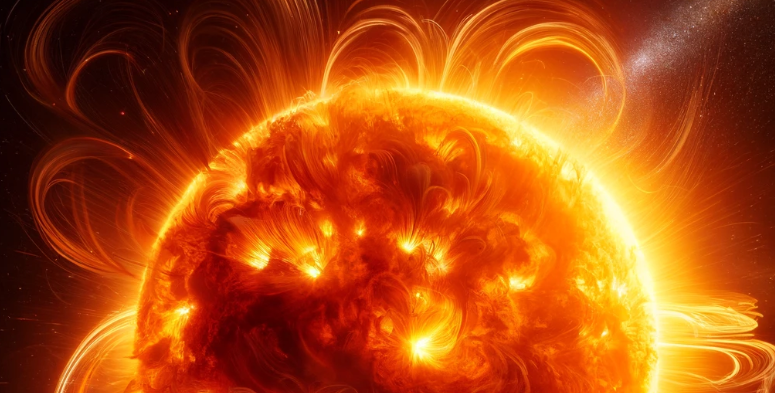| Listen to our audio presentation: Ancient Bond Between Dogs and Humans |
The National Oceanic and Atmospheric Administration’s (NOAA) Space Weather Prediction Center (SWPC) has issued a grave “Severe (G4)” Solar Storm Watch for the evening of Friday, May 10, 2024 in light of a series of solar flares and coronal mass ejections (CMEs) that initiated on May 8. With the possibility of additional solar eruptions, this geomagnetic storm’s conditions might extend throughout the weekend.
NOAA’s SWPC has been vigilantly monitoring these solar activities that begun due to an expansive sunspot cluster. Along with emitting several moderate to strong solar flares since May 8, at least five of these flares are associated with CMEs, determined to be Earth-directed. SWPC forecasters are keeping a keen eye on NOAA and NASA’s space assets for the onset of a geomagnetic storm.
CMEs, essentially explosions of plasma and magnetic fields from the sun’s corona, can lead to multiple effects when directed towards Earth. These include spectacular auroral displays, but more concerning, potentially disrupted communication channels, electricity grid disturbances, and compromised navigation, radio, and satellite operations. In preparation, SWPC has alerted the operators of these systems enabling them to take proactive defensive measures.
However, it is not all bad news for the residents of Alabama and Northern California as they will potentially witness memorable displays of auroras as part of this severe storm.
───────────────
– A Solar Flare refers to an intense, localized emission of electromagnetic radiation following the acceleration of charged particles in the Sun’s atmosphere.
– Impacted infrastructure due to CMEs could include anything from radio, navigation, and electricity supply, to satellite and communication networks on Earth’s surface.
– Aurora, sometimes referred to as polar lights, are natural light displays in the Earth’s sky due to the interaction of solar wind particles with the Earth’s magnetic field.
– Flares are more frequent around sunspots, which are areas with intense magnetic fields linking the corona to the solar interior
– Frequency of solar flares vary with the 11-year solar cycle, ranging from several daily during solar maximum to less than one weekly during solar minimum.
Here’s a list of some of the largest solar flares in recorded history, based on their intensity and impact:
- November 4, 2003 (“The Halloween Storms”): This solar flare is considered one of the most powerful ever recorded, with an estimated X28+ class intensity on the X-ray flux scale. The exact measurement maxed out the sensors on the GOES satellite, suggesting it could have been even more powerful.
- April 2, 2001 (X20 class): This intense flare emitted from active region 9393, which was one of the largest sunspots observed. It caused extensive radio blackouts and satellite communications disruptions.
- August 16, 1989 (X20 class): This flare was similar in magnitude to the 2001 event and was associated with major disruption to radio communication and power grid operations.
- October 28, 2003 (X17.2 class): Part of the same series of flares during the “Halloween Storm” period, this significant solar event triggered widespread auroras and disrupted satellite and communication systems.
- September 7, 2005 (X17 class): This flare came from a sunspot group that was very dynamic and produced a series of strong flares over several days.
- March 6, 1989 (X15 class): This flare led to a severe geomagnetic storm that caused the collapse of the Hydro-Québec power grid in Canada, leading to a widespread blackout.
- October 24, 2003 (X10 class): Also part of the “Halloween Storms,” this flare was one of several during a period of very high solar activity.
- July 23, 2012: While not a flare in itself, this event involved a massive solar storm, often mentioned in discussions about extreme space weather. If it had hit Earth, it could have surpassed the 1859 Carrington Event in intensity.
- September 1, 1859 (“The Carrington Event”): This is the most famous historical solar storm, believed to be around X10 in intensity. It caused telegraph systems across Europe and North America to fail, with reports of operators receiving shocks from their equipment.
───────────────
References:
Reference 1: Space Weather Prediction Center, National Oceanic and Atmospheric Administration.
Reference 2: Jim Peterson Digital News Report
Reference 3: Solar Flares (Radio Blackouts), National Oceanic and Atmospheric Administration
Here’s a Twitter post you can use:

